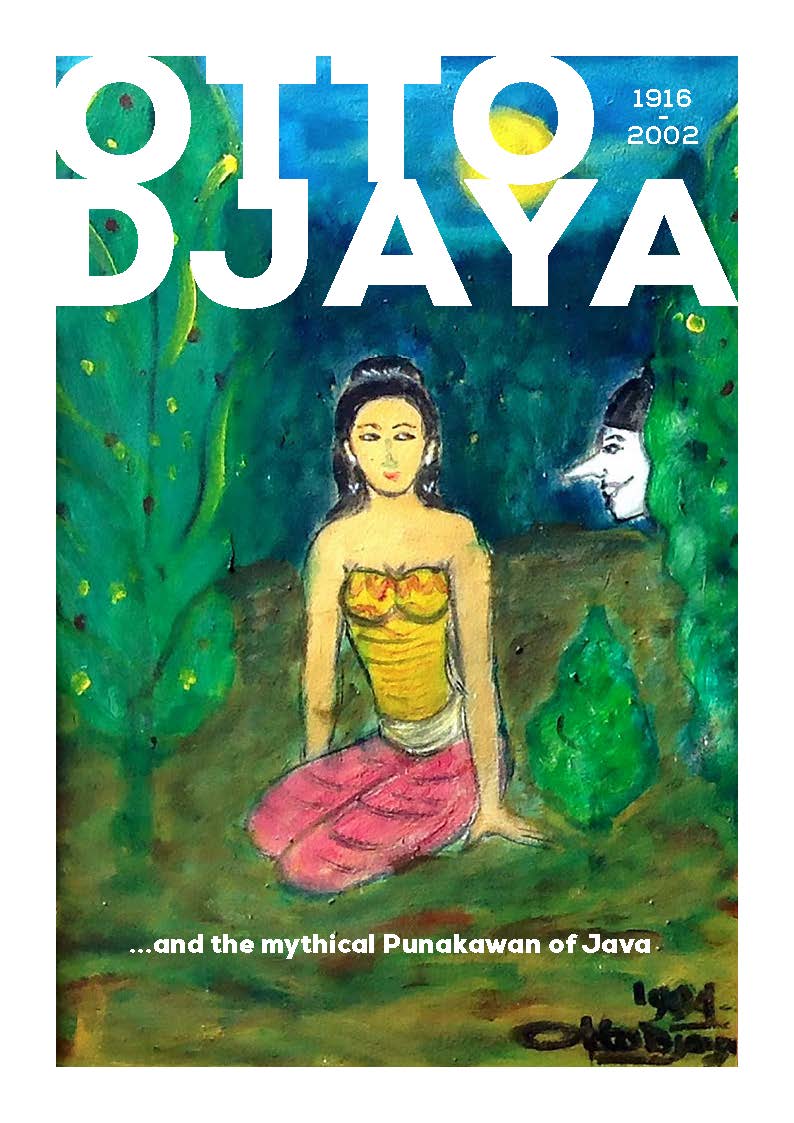Otto Djaya (1916-2002) and the mythical Punakawan of Java
Otto Djaya (1916-2002) and the mythical Punakawan of Java
Otto Djaya (1916-2002) and the mythical Punakawan of Java
Symbolism in Indonesian fine art of modern painting was widely portrayed by painters in the 20th century. Indonesia was then known as the Netherlands East Indies, a colony of the Netherlands until 1949. Symbolism was a popular motif generator among Indonesian indigenous artists. This style contrasted with the works of Dutch and other foreign artists in the Indies who at the time pursued the “Mooi Indie/the beautiful Indies” style of broadcasting Java’s heart-stopping natural beauty. The Symbolism that the indigenous painters worked with was not invented locally. Inspiration came from traditional Hindu and Buddhist myths imported to Java from other parts of Asia. Otto Djaya grew up a young painter with all these ideas to choose from for his expressionism. He served Indonesia in the 1945/46 war for independence from the Netherlands. When his older and already famous brother, Agus Djaya, was sent to Amsterdam on a painting scholarship in 1947/49, Otto Djaya also went. Returning in 1950, Otto Djaya did not immediately think of the Punakawan. However, as national politics began to put a damper on public expression, Otto Djaya began to develop what was to become a characteristic painting style of his: he adopted and adapted the Java invented Punakawan, mythical characters that delivered comedy and satire as immensely popular intervenors in the Wayang puppet culture. Symbolism in public expressions increased to reach a peak in the 1990s. Otto Djaya was a folk artist. His paintings celebrated the daily lives of ordinary people. He delivered the socio-political portion of his painting repertoire under the guise of the Punakawan. By making the Punakawan a part of his artistic expressionism Otto Djaya appealed and reached out to the ordinary folk with his art and his message(s).
The authors examine if Otto Djaya is painting as Semar, the father of Gareng, Petruk and Bagong, the beloved Punakawan brothers who fool around in his paintings.
Symbolism in Indonesian fine art of modern painting was widely portrayed by painters in the 20th century. Indonesia was then known as the Netherlands East Indies, a colony of the Netherlands until 1949. Symbolism was a popular motif generator among Indonesian indigenous artists. This style contrasted with the works of Dutch and other foreign artists in the Indies who at the time pursued the “Mooi Indie/the beautiful Indies” style of broadcasting Java’s heart-stopping natural beauty. The Symbolism that the indigenous painters worked with was not invented locally. Inspiration came from traditional Hindu and Buddhist myths imported to Java from other parts of Asia. Otto Djaya grew up a young painter with all these ideas to choose from for his expressionism. He served Indonesia in the 1945/46 war for independence from the Netherlands. When his older and already famous brother, Agus Djaya, was sent to Amsterdam on a painting scholarship in 1947/49, Otto Djaya also went. Returning in 1950, Otto Djaya did not immediately think of the Punakawan. However, as national politics began to put a damper on public expression, Otto Djaya began to develop what was to become a characteristic painting style of his: he adopted and adapted the Java invented Punakawan, mythical characters that delivered comedy and satire as immensely popular intervenors in the Wayang puppet culture. Symbolism in public expressions increased to reach a peak in the 1990s. Otto Djaya was a folk artist. His paintings celebrated the daily lives of ordinary people. He delivered the socio-political portion of his painting repertoire under the guise of the Punakawan. By making the Punakawan a part of his artistic expressionism Otto Djaya appealed and reached out to the ordinary folk with his art and his message(s).
The authors examine if Otto Djaya is painting as Semar, the father of Gareng, Petruk and Bagong, the beloved Punakawan brothers who fool around in his paintings.

Publisher
Hans Peter Holst
ISBN
9789671868409
Published
2020
Specialisation
Social Sciences
Theme
Society
Art and Culture
Region
Indonesia